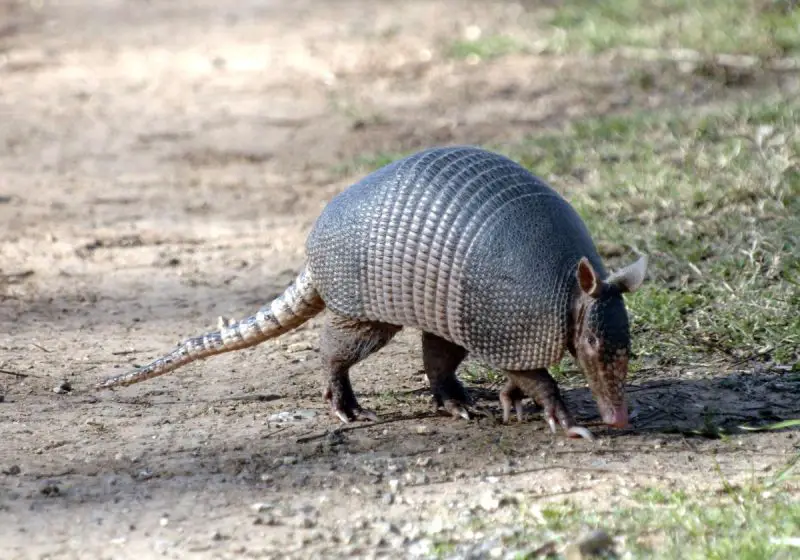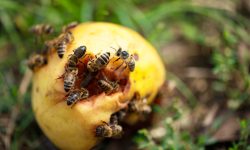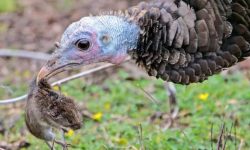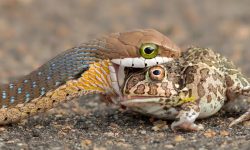Armadillos are fascinating, armored mammals that have captured people’s curiosity for centuries. Known for their unique shells and digging abilities, they thrive in various environments across the Americas — from grasslands and deserts to forests and suburban areas.
But one question always intrigues wildlife lovers: What do armadillos eat?
These animals are opportunistic omnivores, meaning they eat a wide variety of foods, both animal and plant-based. Their diet changes depending on their habitat, season, and food availability. Most armadillos rely heavily on insects and small invertebrates but also consume fruits, roots, and even carrion when necessary.
In this detailed guide, we’ll explore 20 foods armadillos love the most, revealing how their diet helps them survive, reproduce, and thrive in the wild.
Understanding Armadillo Diets

Armadillos Are Omnivorous Foragers
Armadillos are not picky eaters. Their primary method of finding food is digging into soil and leaf litter using their sharp claws and keen sense of smell. They detect prey hidden beneath the ground, often feeding on insects and larvae that most animals overlook.
They are also opportunistic — meaning they eat whatever is available. In the wild, this adaptability ensures survival through changing seasons and weather conditions.
Feeding Habits and Adaptations
Armadillos usually feed at dusk or night. Their long, sticky tongues allow them to snatch up insects quickly. Their teeth are small and simple, designed more for crushing soft foods than chewing tough materials.
Their diet plays a crucial ecological role: by digging for insects and larvae, armadillos aerate the soil and help control pest populations.
20 Foods Armadillos Love the Most
1. Ants
Ants are a staple food for many armadillo species. They’re abundant, easy to find, and provide a good source of protein and fat.
Armadillos dig through soil or ant nests to capture them using their sticky tongues. Since ants live in colonies, they offer a steady food supply that armadillos can return to regularly.
However, armadillos must avoid fire ant colonies, as their bites can be painful and even harmful.
2. Termites
Termites are another favorite food, especially for nine-banded armadillos. They’re high in protein and can be found in decaying wood or underground mounds.
Armadillos can smell termite tunnels several inches below the surface and will dig persistently to reach them. This makes them valuable for controlling termite populations naturally.
Their long snouts and strong claws are perfectly designed for prying open termite nests and eating large quantities quickly.
3. Beetles and Beetle Larvae
Beetles and their larvae make up a large portion of an armadillo’s diet. The larvae, often found in rotting logs or under soil, are soft and full of nutrients.
Armadillos use their excellent sense of smell to locate larvae beneath the surface. Beetles provide protein and healthy fats, essential for maintaining body temperature and energy levels.
By eating beetles, armadillos also help balance insect populations, preventing infestations in natural ecosystems.
4. Earthworms
Earthworms are easy to catch and digest, making them a reliable food source for armadillos. These creatures are abundant in moist soil, particularly after rainfall.
Earthworms are packed with protein, minerals, and moisture — making them ideal for hydration in dry environments. Armadillos use their claws to dig just beneath the surface, extracting worms with surprising precision.
This diet component helps armadillos stay hydrated and nourished, especially in arid regions where water is scarce.
5. Grubs
Grubs — the larvae of various insects — are one of an armadillo’s most sought-after foods. They live underground and can be found under logs, roots, or decaying plants.
Armadillos detect grubs by smell and vibration, then dig small holes to extract them. Each grub provides a rich, fatty meal perfect for building energy reserves.
Because grubs are so nutrient-dense, armadillos may dig multiple shallow holes in search of them, often leaving characteristic foraging marks across lawns.
6. Ant Larvae and Pupae
Armadillos often target not just adult ants but also their larvae and pupae. These stages are soft and highly nutritious, making them easier to digest.
They’ll dig into ant colonies to reach the brood chambers where larvae are kept. This provides a concentrated meal full of protein and fats necessary for growth and reproduction.
Such feeding habits make armadillos natural pest controllers — beneficial for balancing insect populations.
7. Spiders
Although not a main food source, armadillos occasionally eat spiders when they encounter them in burrows or under rocks.
Spiders add variety to their diet and contain beneficial minerals and proteins. Armadillos’ quick reflexes and keen smell allow them to capture spiders without difficulty.
This opportunistic behavior highlights their ability to adapt to any available food source.
8. Small Snails and Slugs
Snails and slugs are soft-bodied invertebrates that armadillos love, especially in humid conditions. These animals provide hydration, calcium, and trace minerals.
Armadillos typically hunt for them at night after rain. Their moist texture makes them easy to swallow, and their calcium content supports strong bones and shell growth in young armadillos.
While they’re not the primary diet item, they serve as a valuable supplement in wetter regions.
9. Small Amphibians (Frogs and Toads)
Occasionally, armadillos will consume small frogs or toads. These amphibians are rich in protein and easy to catch in swampy areas.
Armadillos locate them using sound and vibration, especially when frogs call during breeding seasons. While not a daily food, amphibians serve as a good energy boost during times of insect scarcity.
This opportunistic hunting shows just how flexible their feeding behavior can be.
10. Lizards and Small Reptiles
Some armadillos, particularly larger species, eat small lizards when available. They’re rich in protein and fat, which helps sustain armadillos through long periods without food.
Armadillos find them under rocks or within loose soil. These reptilian snacks are a great supplement for energy, especially for armadillos living in semi-arid regions.
Their quick hunting reflexes and excellent smell make capturing small reptiles surprisingly easy.
11. Carrion (Dead Animals)
Armadillos are scavengers and won’t pass up an easy meal. They often eat carrion — dead animals found along roadsides or in the forest.
Carrion provides protein and fat without much effort. While it may sound unpleasant, scavenging helps clean up the environment and recycle nutrients back into the ecosystem.
Armadillos have a strong immune system that allows them to safely consume decaying meat in small amounts.
12. Bird Eggs
When given the opportunity, armadillos will eat bird eggs found on the ground or in low nests. Eggs are packed with protein and essential fats.
They use their claws to gently crack open shells and consume the contents. Ground-nesting birds like quail or killdeer are most at risk from this natural predation.
While not a primary food source, eggs provide a valuable seasonal treat rich in nutrients.
13. Fruits
Armadillos supplement their diet with fruits, especially when insects are less available. Wild berries, melons, and figs are common favorites.
Fruits provide natural sugars and hydration. In some tropical regions, armadillos play a role in seed dispersal, helping plants reproduce.
However, fruits are eaten in moderation — just enough to balance their protein-heavy diet.
14. Roots and Tubers
Roots and tubers such as yams, carrots, and sweet potatoes are among the few plant-based foods armadillos dig for. These foods are rich in carbohydrates and fiber.
Their strong claws are perfect for uncovering buried roots, and the starchy content provides long-lasting energy.
Roots also help armadillos stay hydrated and maintain energy during dry seasons when insects become scarce.
15. Mushrooms and Fungi
In moist forest habitats, armadillos eat mushrooms and fungi. These contain vitamins, minerals, and hydration, adding variety to their diet.
They’re particularly drawn to soft, decomposing fungi growing near logs or tree roots. While fungi aren’t a main food source, they offer valuable micronutrients and fiber.
This feeding habit highlights armadillos’ role in breaking down decaying matter and enriching the soil.
16. Seeds
Seeds are small but energy-dense, making them ideal for armadillos that stumble upon them while foraging. They provide fats and carbohydrates that support long-term endurance.
In forests and grasslands, armadillos eat seeds dropped by trees and shrubs, often while digging for insects. This behavior helps spread seeds across habitats, contributing to plant diversity.
However, seeds are secondary foods — eaten more for convenience than preference.
17. Grasshoppers and Crickets
Grasshoppers and crickets are easy prey for armadillos and provide excellent protein. Their movement triggers the armadillo’s hunting instincts, leading to quick and precise strikes.
During summer, these insects become abundant, giving armadillos an easy-to-find food source. Their high energy content helps maintain activity levels during warm months.
These insects are a key food item for young armadillos learning to hunt independently.
18. Caterpillars and Moths
Soft-bodied caterpillars are another favorite. They’re rich in fat and protein and easy to digest. Armadillos find them on low plants or in soil near roots.
Caterpillars are seasonal but highly nutritious. Moths, especially those that rest on the ground, are also occasionally eaten.
Their abundance during summer provides an ideal energy source for active armadillos.
19. Small Crustaceans
In coastal regions, armadillos occasionally consume small crustaceans like crabs or shrimp washed ashore. These provide minerals and trace nutrients rarely found in terrestrial food.
Their tough shells are no match for an armadillo’s claws and jaws. Eating crustaceans helps supplement their diet with iodine and salt, beneficial for healthy metabolism.
While rare, this feeding habit demonstrates armadillos’ impressive adaptability to various environments.
20. Plants and Leaves
Though primarily insectivores, armadillos sometimes nibble on soft plants, leaves, or grasses. These foods provide fiber for digestion and trace vitamins.
They’re not a preferred food but serve as filler when animal prey is scarce. In captivity, small portions of leafy greens help maintain digestive balance.
By eating limited plant material, armadillos maintain a diverse and flexible diet suited for survival.
The Importance of Diet for Armadillos
Nutrition and Survival
Armadillos’ diet ensures they get enough protein, fats, and hydration to survive in diverse environments. Insect-based diets keep them lean and active, while fruits and roots supplement vitamins and energy.
Ecological Impact
By consuming insects and larvae, armadillos help control pest populations naturally. Their digging also aerates soil, aiding plant growth and maintaining ecosystem balance.
Frequently Asked Questions (FAQs)
Do armadillos eat meat?
Yes, armadillos eat meat in the form of insects, worms, and small animals. Occasionally, they scavenge on carrion, but they mainly rely on invertebrates for protein.
Do armadillos eat plants or fruit?
They do — though in smaller amounts. Fruits, roots, and plants are supplementary foods that provide fiber and hydration when insects are limited.
Do armadillos eat ants and termites?
Absolutely. Ants and termites are their favorite foods. Armadillos use their long, sticky tongues to collect them from underground nests.
Do armadillos eat snakes?
Rarely. They might consume very small snakes if available, but they don’t actively hunt reptiles. Their diet is mostly insect-based.
How do armadillos find food?
Armadillos use their exceptional sense of smell to detect prey under soil or logs. They dig with their claws and use their sticky tongues to capture food efficiently.
Conclusion
Armadillos may look slow and simple, but their diet reveals how skilled and adaptable they truly are. From ants and grubs to roots and fruit, they eat an impressive variety of foods that sustain them in ever-changing environments.
Their feeding habits not only ensure survival but also benefit ecosystems by controlling insects and improving soil quality. Understanding what armadillos eat helps us appreciate their role as nature’s underground gardeners — quietly keeping the balance of life beneath our feet.






